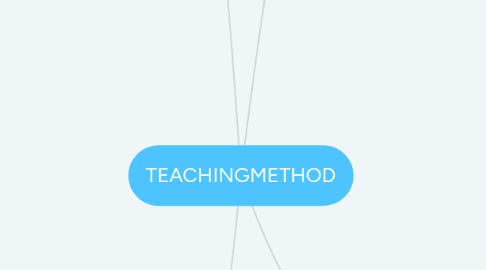
1. Teaching Writing
1.1. 2 Approaches of W
1.1.1. As Process W
1.1.1.1. Text as a resource for comparison
1.1.1.2. Ideas as starting point
1.1.1.3. many draft
1.1.1.4. more global, focus on purpose, theme, text type.
1.1.1.5. collaborative (cooperative)
1.1.1.6. 5 Stages:
1.1.1.6.1. 1 Pre W
1.1.1.6.2. 2. Drafting
1.1.1.6.3. 3. Revising
1.1.1.6.4. order of ideas more important than ideas themselves
1.1.1.6.5. 4. Editing
1.1.1.6.6. 5 Publishing
1.1.2. As Product W
1.1.2.1. Imitate/stimulate model text
1.1.2.2. one draft
1.1.2.3. features highlighted including controlled practice
1.1.2.4. individual
1.1.2.5. 4 Stages
1.1.2.5.1. 1. Familiarization: Model text are read and features of genre are highlighted.
1.1.2.5.2. 2. Control W: consists of controlled practice of highlighted features
1.1.2.5.3. 3. Guided W: Most essential part in W, coz it aims at the organization of the ideas.
1.1.2.5.4. 4. Free W: End of Process,S choose from a choice of comparable W task
1.2. Why W?
1.2.1. To comm. over distances/ across the time
1.2.2. to participate in Daily life
1.2.3. to remember and record
1.2.4. "make though invisible" , express inner self
2. Teaching Listening
2.1. How to teach L?
2.2. Primary purposes of Human Listening
2.2.1. For Gist
2.2.2. For specific Info
2.2.3. In detail
2.2.4. Inferential
2.3. Pre-Listening
2.3.1. Why?
2.3.1.1. To activate/exploit Ss' interests
2.3.1.2. Get Ss willing to learn
2.3.1.3. Improve/ develope Ss' predicting skill
2.3.1.4. Get Ss ready before listening
2.3.2. Tasks:
2.3.2.1. Predicting through Voc
2.3.2.2. Ss generated Qs
2.3.2.3. Brainstorm/word map about topic
2.3.2.4. Eliciting info from picture
2.4. While-Listening
2.4.1. Why?
2.4.1.1. Give Ss reason to listen
2.4.1.2. verify the prediction and guessing in Pre-L
2.4.1.3. develop Ss skills of eliciting messages from Spoken language
2.4.2. Tasks:
2.4.2.1. T/F Statements
2.4.2.2. Putting events/items ỉn right order
2.4.2.3. Multiple choice Q
2.4.2.4. Note taking
2.4.2.5. Completing the tables
2.4.2.6. Labelling
2.4.2.7. Filling the blank
2.4.2.8. Spotting mistakes
2.5. Post-Listening
2.5.1. Why?
2.5.1.1. check Ss' understanding listening exercise after completed the while task
2.5.1.2. Give Ss more oppo. to check answer of While w partners and T
2.5.1.3. expand on topic or lang. of listening text; transfer newly learned knowledge to other tasks & contexts.
2.5.2. Tasks:
2.5.2.1. Open ended Q.
2.5.2.2. Repetition (of dia.)
2.5.2.3. Create new situation or dia.
2.5.2.4. Roleplay a similar situation
2.5.2.5. Group dictation (running dicta.)
2.5.2.6. Erase it
2.5.2.7. Personalization (give their own thoughts about topic)
3. Teaching Voca
3.1. Important of Teaching Voc
3.1.1. Meaning
3.1.2. Spelling
3.1.3. Collocation
3.1.4. Grammar of words ( Ed, Ing, S ES)
3.2. Techniques
3.2.1. Visual
3.2.1.1. Demonstration
3.2.1.2. Acting out/ pantomine
3.2.1.3. Miming (Gesturing)
3.2.2. Auditory
3.2.2.1. Using sounds from Daily life, nature
3.2.2.2. Poem, Nursery rhythm
3.2.3. Verbal
3.2.3.1. Definition
3.2.3.2. Connotation =/ Detonation: nghĩa đen
3.2.3.3. Collocation (words go together. high temp not tall temp)
3.3. Type of Voc
3.3.1. Active
3.3.1.1. know the meaning of word accurately
3.3.1.2. Use in daily life/ confidently
3.3.1.3. use in Speech and W
3.3.2. Passive
3.3.2.1. don't use in their own speech
3.3.2.2. don't know precise meaning
3.3.2.3. Understand depend on context
3.4. Method
3.4.1. Concept - Check - Questions (CCQs)
3.4.1.1. To make sure that under the concept
3.4.1.2. Make contextual Qs (by short Q & A) to check Ss' compre
3.4.2. Meaning - Pronounciation - Form (MPF)
4. Teaching Grammar
4.1. 2 Approaches Inductive
4.1.1. Inductive
4.1.1.1. More effective coz Ss discover rules by themselves while engaged in language use
4.1.1.2. Its believed that the rules ll become clear if Ss are given enough appropriate examples.
4.1.2. Deductive
4.1.2.1. Save time when confront a complex grammar rule
4.1.2.2. build up Ss' confidence in examinations when accuracy as the main criterion of success
4.2. 2 Categories of Practice
4.2.1. Mechanical Practice
4.2.1.1. Get Accuracy
4.2.1.2. Focus on Intonation, Pronounciation
4.2.1.3. T combines physical movement/ actions and language learning
4.2.1.4. Use many kinds of Drills
4.2.1.4.1. Communicative drills (20 Qs game)
4.2.1.4.2. Subtitutions
4.2.1.4.3. Repetition
4.2.1.5. Why to use Drilling?
4.2.1.5.1. Focus on accuracy
4.2.1.5.2. Provide leaners intensive practice
4.2.1.5.3. Tranformation
4.2.1.5.4. build confidence
4.2.1.5.5. Help Ss notice the correct form of Pronunciation
4.2.1.5.6. Provided immediate feedback in term of teacher or r peers
4.2.2. Meaningful Practice
4.2.2.1. Focus on Production, Comprehension, Exchange of Meaning
4.2.2.2. Kinds of Drill
4.2.2.2.1. Choral (
4.3. Techniques
4.3.1. Presentation - Practice - Production (traditional) PPP
4.3.1.1. 1st T present the language
4.3.1.2. 2nd T highlights and explain the language
4.3.1.3. 3rd Ss do controlled practice
4.3.1.4. 4th Ss do freer practice
4.3.2. TBL Task Based Learning
4.3.2.1. T sets "real world' task for Ss
4.3.2.2. T provides language support
4.3.2.3. Ss perform task
4.3.2.4. T monitors and assesses
4.3.2.5. Good for confidence building
4.3.3. Total Physical Responses
4.3.3.1. Fit for Action verbs, body parts, Prep of place
4.3.3.2. Energising, fun, memorable
4.3.4. TTT Test Teach Test
4.3.4.1. Test Ss' understanding of Language through a task, teachs on this assesstmen, test again
4.3.5. Guided Discovery/ Indutctive study
4.3.5.1. T presents language
4.3.5.2. Ss attempt to understand the rules behind it
4.3.5.3. T supps and guides
4.3.5.4. Ss do controlled and freer practice
